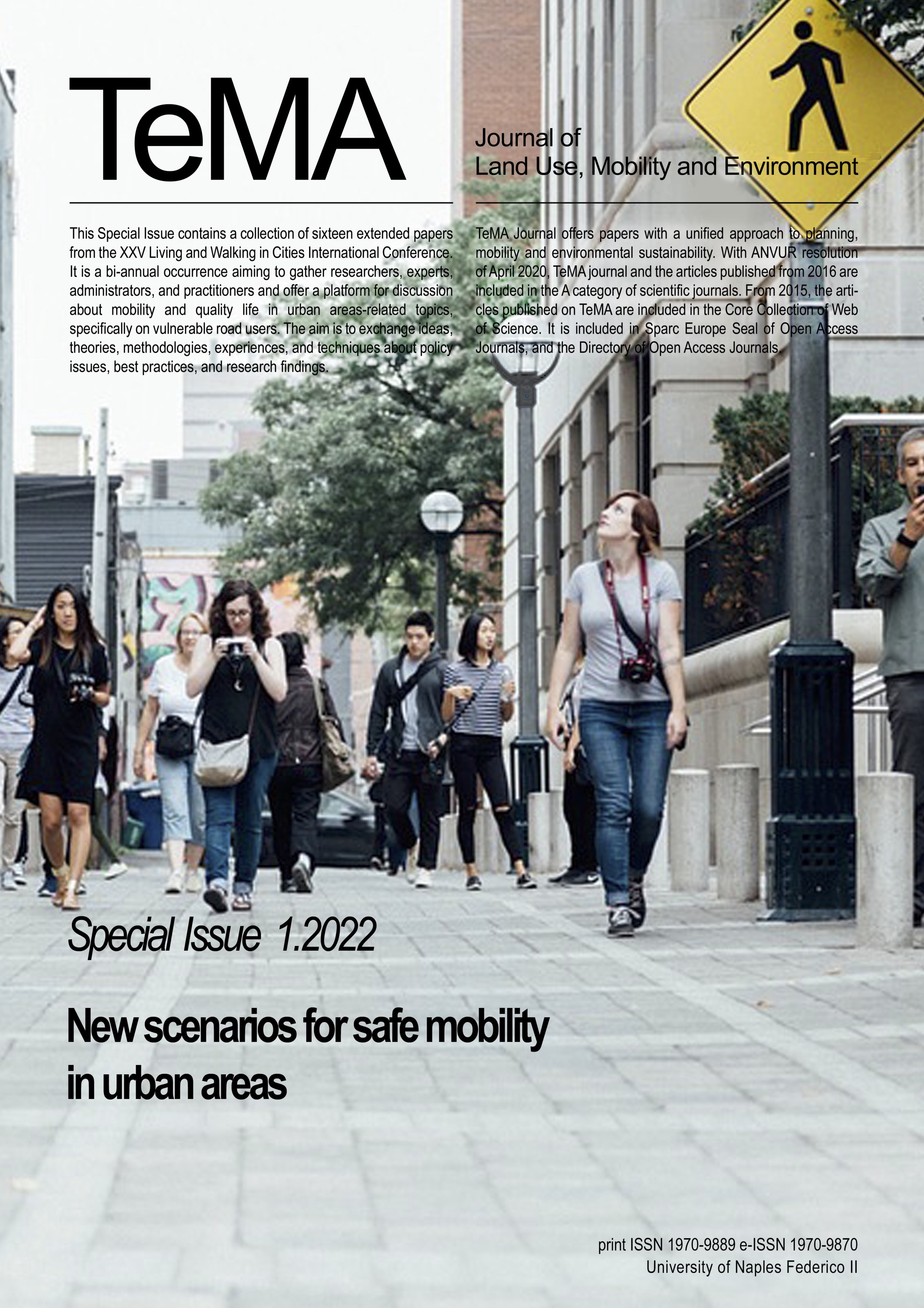Active mobility in historical districts: towards an accessible and competitive city. The case study of Pizzofalcone in Naples.
Abstract
Active mobility, in the form of walking and cycling, is one of the most affordable and practical ways to promote sustainable modes of transport in urban areas, creating walkable, safe, healthy and livable environments. Given its multiple beneficial effects, the scientific community frequently considers it as a driver of urban regeneration, highlighting its role in the enhancement of accessibility and competitiveness. This study aims to deepen the role of active mobility in the redevelopment of historical districts characterized by economic and social marginality, as well as consider the resulting improvement of connectivity, attractiveness, and quality of life. To this end, we identify and classify strategies and best practices of active mobility provided by recent papers and international reports. In addition, we propose the application to a significant case study, Pizzofalcone, in the City of Naples. The area, characterized by high historical, architectural, landscape and cultural value, is not integrated with the rest of the historic city center and currently suffers economic and social marginality. The project proposal, which suggests the redevelopment of the area by redesigning pedestrian and cyclist paths, could be an interesting and economical solution to make Pizzofalcone a fundamental hub for the city and a crossing point for a multitude of people
Downloads
Copyright (c) 2022 TeMA - Journal of Land Use, Mobility and Environment

This work is licensed under a Creative Commons Attribution 4.0 International License.
Authors who publish in this journal agree to the following:
1. Authors retain the rights to their work and give in to the journal the right of first publication of the work simultaneously licensed under a Creative Commons License - Attribution that allows others to share the work indicating the authorship and the initial publication in this journal.
2. Authors can adhere to other agreements of non-exclusive license for the distribution of the published version of the work (ex. To deposit it in an institutional repository or to publish it in a monography), provided to indicate that the document was first published in this journal.
3. Authors can distribute their work online (ex. In institutional repositories or in their website) prior to and during the submission process, as it can lead to productive exchanges and it can increase the quotations of the published work (See The Effect of Open Access)

